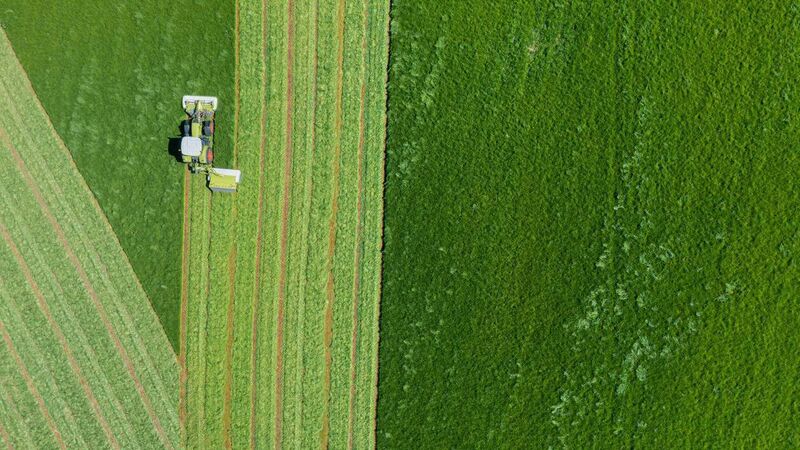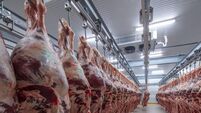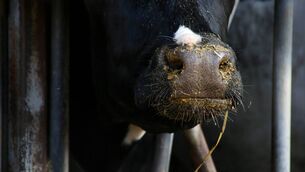Putting a focus on silage quality this summer - tips to boost your crop this year

When the feed will be present in the diet for up to seven months of the year, a few days’ work is a small price to pay for better quality silage, writes
Grass silage plays a crucial role in all production systems across dairy and beef farms.
Without a doubt, it is important to have enough silage to meet the demands of your herd. But the issue with focusing on large, bulky crops is that there is a drop in silage quality both in DMD and energy values.
Feeding a higher-quality silage will have a greater benefit to any herd compared to feeding a poorer-quality silage.
Silage should never be considered as a filler but should be seen as the primary feed source during the winter and early spring.
The use of silage in diets is no longer just for the dry cow period but often from October to April. That is seven months, with silage being somewhat present in the herds’ diet.
As advisors and farmers, we must finally accept that it is no longer acceptable to just blame the weather for poor silage quality because there are multiple factors to be considered.
Silage quality can vary from farm to farm, so it is vital to get it tested annually to see how well or how badly the silage has been preserved from harvest to pitting.
Over the course of the past year, InTouch nutritionists at Alltech have taken over 800 silage samples. The table below outlines the difference in quality across all farms sampled.
|
Average |
Top |
Bottom |
|
|---|---|---|---|
|
DMD |
70 |
79 |
62 |
|
Crude Protein |
12% |
18% |
9.8% |
|
UFL |
0.71 |
0.82 |
0.62 |
|
ME |
10.6 |
12.1 |
9.3 |
First, focus on the grass you are cutting for silage. If the same ground is being cut each year, focus on the sward type that you are using.
Choose a grass seed variety suitable for grass silage. Look at the use of red clover in silage ground, as it will naturally lift the overall protein content of the silage crop and reduce the need for nitrogen. Use the Pasture Profit Index to select grass seeds which will head at similar dates. If you cut your silage every year in the second week of May, do not pick an early-heading variety of grass seed. Choose an intermediate heading date and ensure that all varieties of grass seeds in the bag have intermediate heading dates. Once a silage crop goes to seed, the sward starts losing energy, and the silage, when fermented, will be of lower DMD.
Focus on the cutting date and quality of the sward instead of basing it off the height of your wellies. Take a pre-cut silage test ten days before thinking of cutting, as this will give you an indication of the quality of your silage for ME and protein.
The time of day that you cut, along with the conditions under which the crop is mowed, will also affect overall quality of the crop. Ideally, the silage crop should be spread out immediately behind the mower in order to begin a rapid wilt to lift the dry matter of the crop.
Ideally, sugars in grass silage should be higher than 3% at the time of cutting. This leaves a narrow window to get a crop mown, but when the feed will be present in the diet for up to seven months of the year, a few days’ work is a small price to pay for better quality silage.
Another key element of making high-quality silage is achieving a rapid fermentation. This process requires the silage clamp to be filled efficiently, achieving high levels of compaction to squeeze the air out of the clamp.
Aim for a chop length of 18–25mm when dry matter of silage is above 30%. The dry matter of the crop will greatly influence the chop length required for a rapid fermentation.
The wetter the crop, the longer the chop length can be. Wetter silage under 25% dry matter can have a chop length of 30–50mm. Getting the chop length right leads to a strong beginning for the fermentation process.
Aim to have high levels of compaction by using compactors on silage pits. The material coming into the pit must be suitable for compaction.
The use of clingfilm layers has greatly reduced the level of waste in silage pits, due to the airtight seal.
Once the silage pit is covered, the gold standard is to have the tyres touching, as the silage pit needs weight to help maintain an airtight seal.
As often discussed with customers, a silage additive will not make bad silage good; it will only make good silage better. Aim to cover all the basics before choosing the silage additive best suited for your crop.
The silage fermentation process is brought about by bacteria feeding off the crop’s sugar/energy to produce lactic acid. Often these bacteria are present in low numbers, which can inhibit rapid fermentation, using up more sugars and leading to higher losses.
This year, Alltech has launched Egalis®, a new silage additive which is suitable for use on all forages.
Egalis Ferment is composed of high concentrations of two lactic acid bacteria, which work together to lower the pH of the forage, efficiently and rapidly driving fermentation to a stable final pH.
The benefits offered by Egalis Ferment include maximising the energy and protein of the silage, reducing dry matter losses, and having more and better silage to feed.
If dry matter losses can be prevented in the silage pit, it can reduce the amount of waste silage at feed-out.











